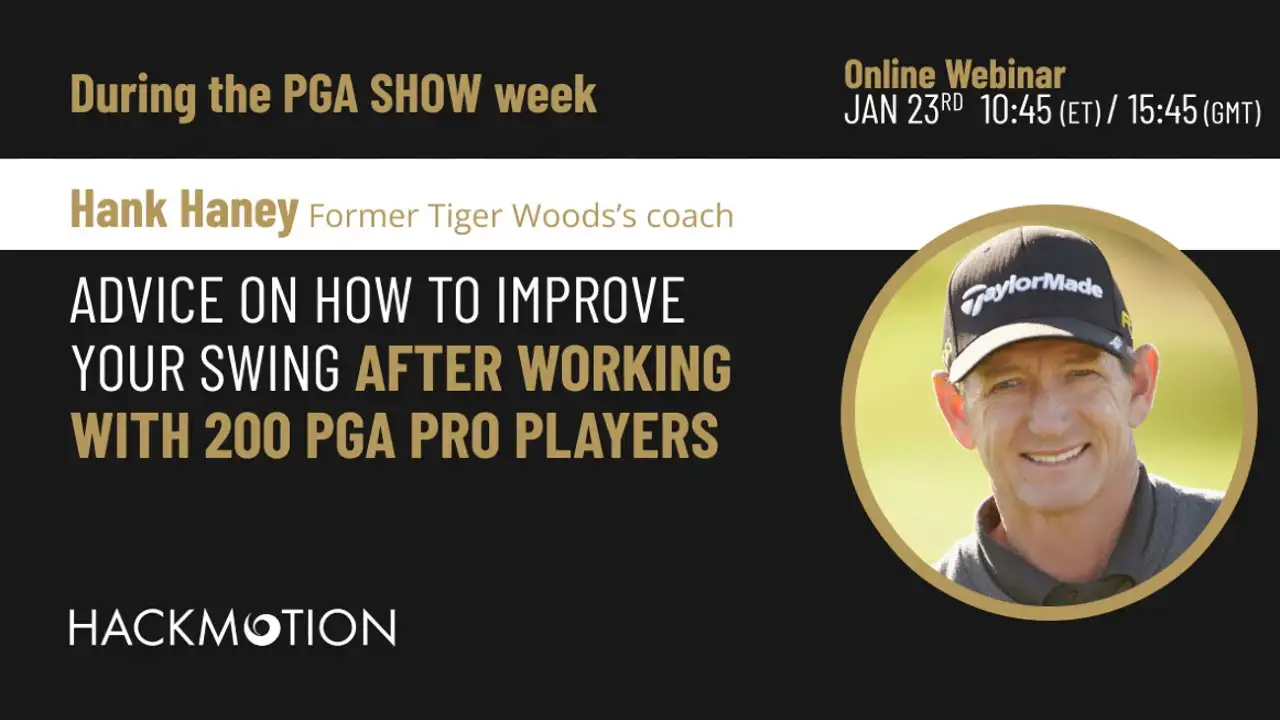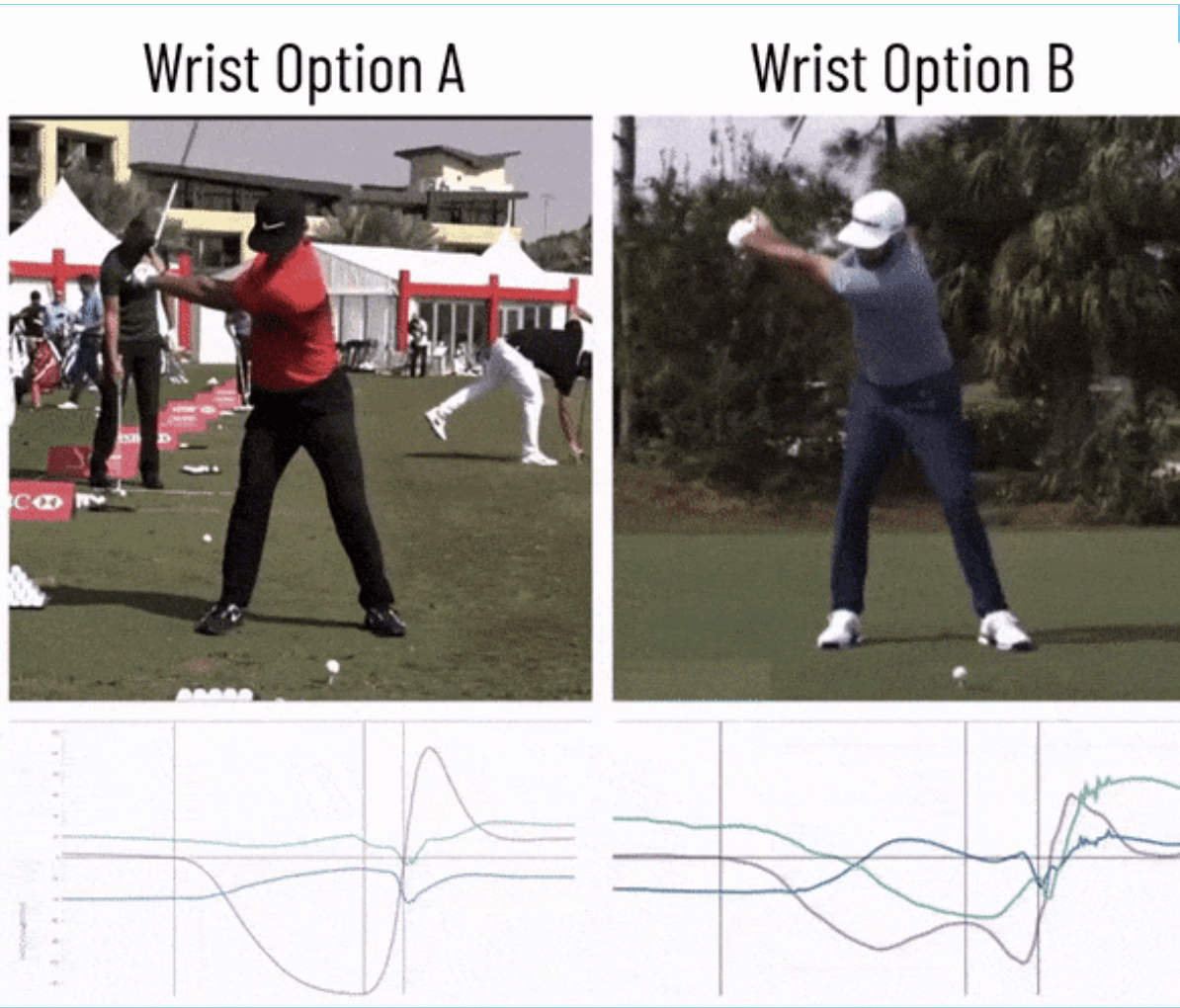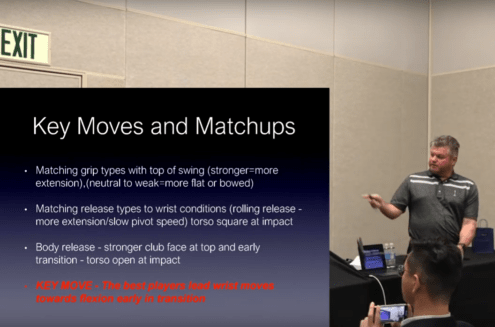Scott Cowx: Tour Player Wrist Patterns
HackMotion data is based on studying more than 1,000,000 golf swings. This kind of data doesn’t lie.
However, interestingly there is no perfect wrist pattern in the game of golf. There are however, two common patterns that we see continually used on the PGA Tour.
PGA Tour Coach and Director of Instruction Scott Cowx breaks down two different tour player wrist patterns for us. Take a look at a motion similar to Tommy Fleetwood and that similar to Dustin Johnson to see which one would work best for your game.
What Can HackMotion Help Us Learn?
One of the key benefits of the HackMotion golf swing trainer is how simple it is to use. Within just a few seconds, you can collect data and be well on your way to a solution for your golf swing.
As Scott Cowx mentions, for both instructors and students of the game, there are two key data points to pay attention to:
- How does a player square the clubface before impact.
- How is the player dealing with clubhead speed throughout the entire swing.
Three Wrist Motion to Understand Before Watching the Video
Learn about the 3 different wrist motion patterns, as described by PGA Tour Coach Scott Cowx.

The terminology used:
- Flexion (-)/Extension (+) (green line) = Bowing/Cupping of the lead wrist
- Radial(+)/Ulnar (-) deviation (blue line) = Cocking/Uncocking of the lead wrist
- Rotation (purple line) = Global Rotation relative to address, Closing clubface (+) /Opening clubface (-)
Option A – Stable Wrist Flexion/Extension pattern (Tommy Fleetwood)
Option A – the first pattern Scott Cowx recommends involves relatively stable flexion/extension, which creates a stable dynamic loft and a long flatspot. This is an option used by players such as Tommy Fleetwood and Thorbjorn Olesen (his 6-Iron wrist data is below).
The speed of the clubhead is released more with wrist rotation rather than with wrist extension.
Notice how the green line (flexion/extension) changes relatively little during the swing and post impact. Thorbjorn Olesen still moves into flexion during the downswing, but after impact, he slowly extends the lead wrist.
This would be considered a more classic pattern, a traditional golf swing.
Main characteristics of the pattern:
- The wrist extension is relatively stable throughout the swing. The move toward extension after impact is less rapid, creating a stable dynamic loft.
- There is a lot of rotation after impact as speed is released more by wrist rotation, less by wrist extension (the purple line increases a lot).
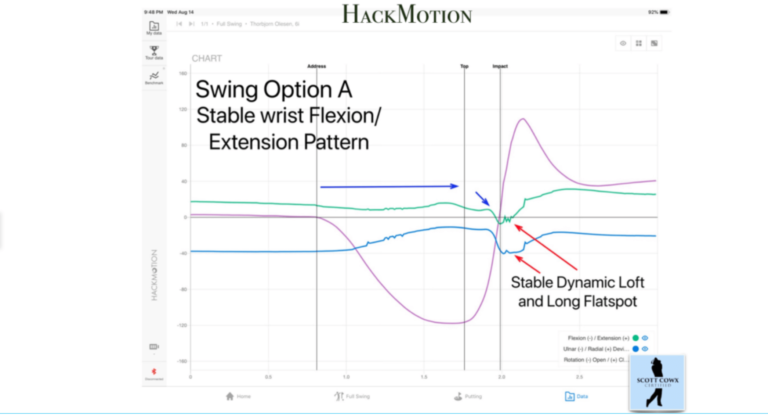
Option B – Flexion toward Extension, Less Rotation (DJ Pattern)
Option B – this pattern involves moving into flexion during backswing, and then releasing club head speed through extension (can be still flexed at impact). This is the pattern used by Dustin Johnson and other young tour players such as Viktor Hovland.
Look at the graph below. Notice how the green line (flexion/extension) moves down into flexion and stays constant during transition. It then starts moving towards extension before impact (though still in slight flexion, negative at impact). The speed of the clubhead always has to go somewhere and for this pattern, the speed is released mostly through extension.
Main characteristics of the pattern:
- The lead wrist goes into flexion during backswing. Flexion then stays constant and the wrist moves towards extension during release.
- The rotation amount through impact is lower – you can see that the purple line is much flatter than for Option A. There is less rotation at impact than at address (purple line below zero at impact), which shows the player has not supinated his forearms too much.
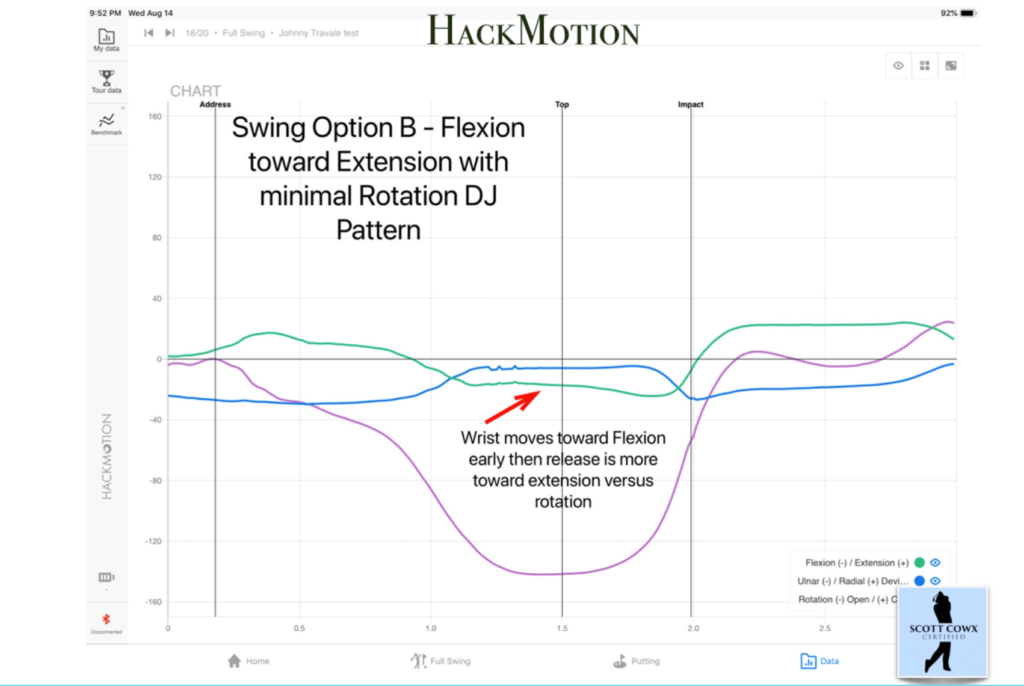
What Can We Learn From Both Tour Player Wrist Patterns?
The wrist patterns that feature the stable wrist and the flexion toward extension are quite different. But there are two similarities that we can see.
First, from setup to the top of the backswing, great golfers are not adding extensions. In pattern A, the wrist remains almost entirely stable; in the second option, a little flexion is added, but not extension.
Secondly, as golfers move into the impact position, they have very little extension and sometimes flexion. With your wrist in this position, it’s easy to compress a golf ball and create consistent contact.
What is your wrist position? With HackMotion data, you can determine if your current wrist angles are causing inconsistency in your game.
Final Thoughts
Scott Cowx gives us a great in-depth analysis of how two different wrist patterns can be used to create impressive on course performances from tour players.
HackMotion shows us the importance of consistency and the correct ratios; there is no perfect wrist angle.
Whether you are a brand new golfer or you have been playing for 30 years, you will learn something about your game from HackMotion.






